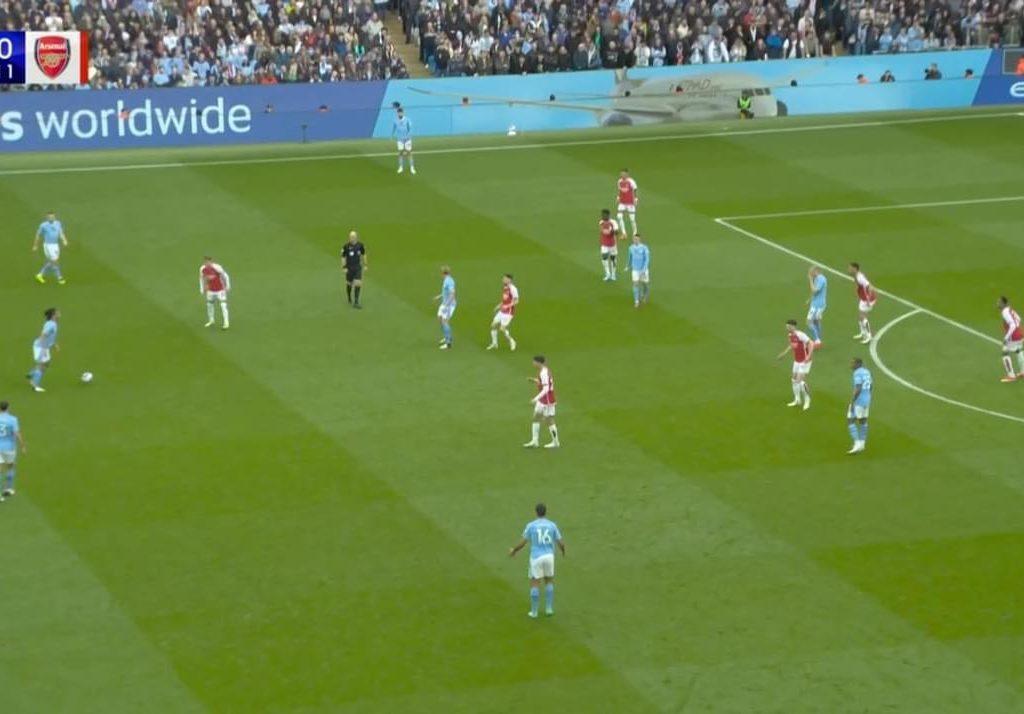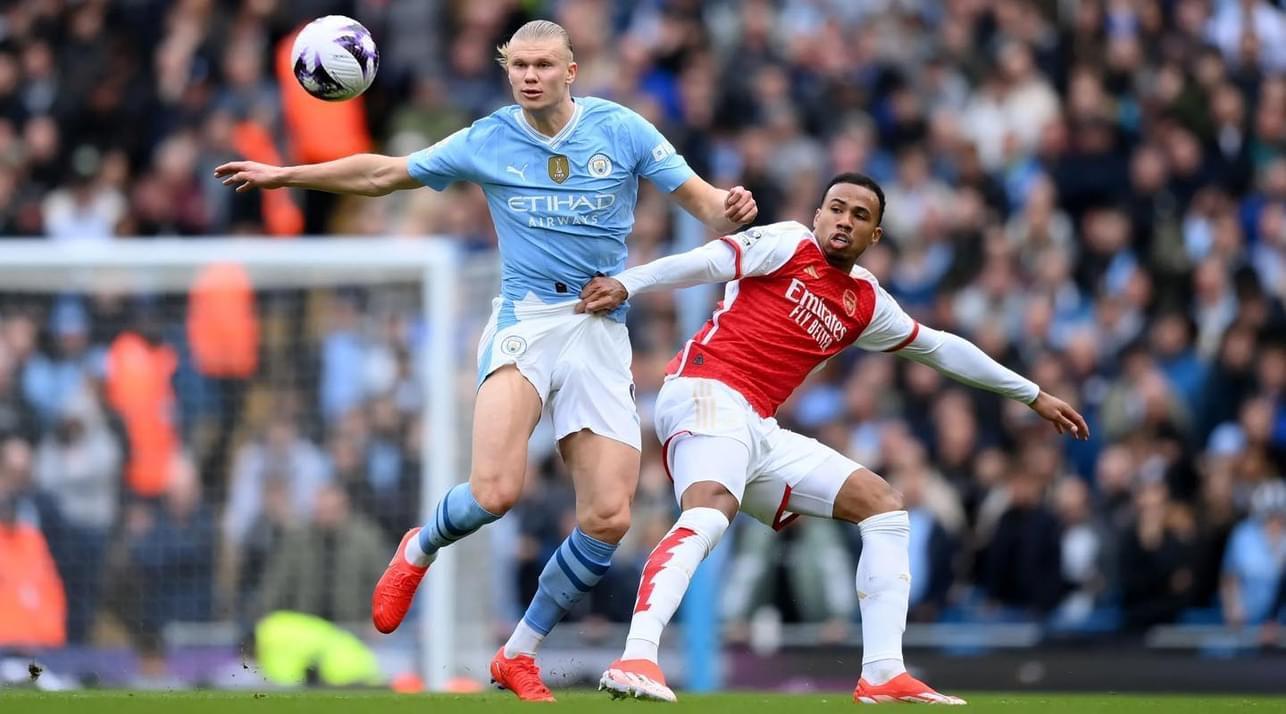If this is the beginning of the next great Premier League rivalry – if the post-Jurgen Klopp era is Pep Guardiola versus Mikel Arteta – then neutrals had better hope the head-to-heads of 2023/24 have simply been the tentative early rounds of two boxers figuring each other out.
The alternative read on a hyper-tense but gruellingly cautious 0-0 draw at the Etihad Stadium on Sunday is that all the speed and fury of Premier League football over the last decade has led to a rebounding back to safety.
Perhaps tactical fashion is cyclical, and the gung-ho years are about to be (over)corrected with a return to the waiting games of Rafael Benitez and Jose Mourinho.
It felt that way on Sunday. Only three Premier League matches this season have had three or fewer shots on target. One of those was the previous meeting between Arsenal and Manchester City in October, which featured three, the same number as in Sunday’s encounter.

Here’s the story of a goalless draw that pleased nobody but Liverpool.
Arsenal’s all-out defence shuts down narrow City
Arsenal’s part in a defensive 90 minutes is completely understandable given City’s record.
Arteta’s side became only the fourth team ever to keep clean sheets against Guardiola in two league matches in the same season, after Borussia Monchengladbach in 2014/15, Manchester United in 2020/21 and Crystal Palace in 2021/22.

They also ended a run of 57 consecutive Premier League home matches in which Man City have scored.
It was perfectly reasonable, then, for Arsenal to sit deep in a very narrow 4-4-2 and invite Man City to break them down, which is what they did in the first half in particular.
After some hard pressing early on, Arsenal were pinned back, but thanks to the brilliance of their centre-backs Gabriel and William Saliba (along with outstanding shepherding from Declan Rice), Man City couldn’t get close in the opening half.
By half-time, City had 72 per cent possession, but had taken a mere seven touches in the opposition penalty area, although it wasn’t all down to Arsenal’s defensive work.
Guardiola’s decision to play so narrowly helped the Gunners significantly. Phil Foden and Kevin De Bruyne were very far infield, which, adding a full-back to midfield, crowded too many players into the middle.
Here, we see how tough it was for Man City – lacking width – to thread the ball through such a crowded zone of the pitch.
This was the story of a first half in which Arsenal struggled to pass out of the press (such was Jorginho’s isolation at the base of midfield), leading to a one-sided half low on chances.
Guardiola adds width as Raya’s long kicks help Arsenal
In the second half, the game became a little more interesting to watch.
First of all, Arsenal began to press a lot higher up the pitch, facilitated almost entirely by David Raya switching from short goal-kicks to long ones: Arteta stopped trying to build out from the back, instead grappling for second balls in the Man City half and then pressing hard when it was lost.
Arsenal’s passing accuracy dropped from 74 per cent to 68 per cent in the second half, while Raya played 84 per cent of his passes long, up from a season average of 43 per cent.
It worked, giving Arsenal a foothold and pushing their backline up the pitch, and yet without any real pace in the forward line, they just couldn’t muster attacks.
Nevertheless, it opened up the pitch slightly, although Guardiola’s own tactical tinkering was the main reason for that.
He instructed De Bruyne to sit out on the right wing, doubling up with Silva to finally add some width, before making a double switch on the hour mark; an almost unprecedentedly early move by Guardiola.
Jeremy Doku and Jack Grealish were now regularly sought out with longer passes, while De Bruyne continued to flit from wing to wing rather than stay central, resulting in a few half-chances.
Note City’s width in the second half compared with the first.
This could be the future of this fixture
When asked after the game how to break down a low block that’s defending well, Guardiola puffed out his cheeks and joked: “Kill someone?”
Arteta knows his mentor inside out. This was a masterclass in defensive resilience against the slow and patient controlling football that Guardiola preaches.
But Arsenal were also Guardiola-like, struggling to pass with fluency but also passing up opportunities to counter-attack quickly.
They did not take the necessary risks in possession, safely recycling the ball to shut down any hope of an open contest. Arsenal attempted only six shots in this game, their lowest tally in a Premier League match since November 2021.
This, presumably, is the future of this fixture.
Earlier matches – Man City’s 5-0, 4-1, and 3-1 wins – were defined by sudden defensive mistakes from Arsenal and a man-to-man pressing system that Guardiola solved.
This season, Arteta has stepped off, and for 180 minutes Guardiola had no answer. There is no reason Arsenal will be changing their approach any time soon.
The ball is in Man City’s court, but Guardiola – like Arteta, his protege – is all about minimising risk.
Why, then, would this fixture open up next time they meet? For the time being, we are back in the mid-2000s and the “tactical chess” we enjoyed for its tension, but not for its football.



















